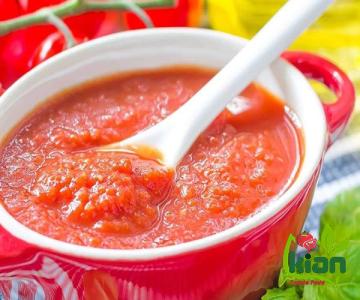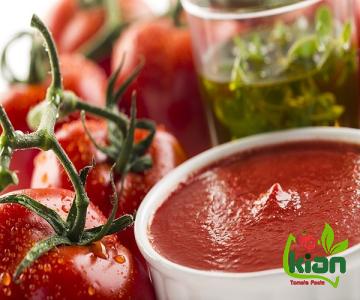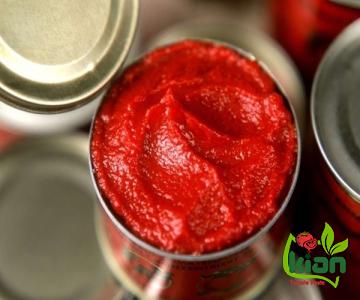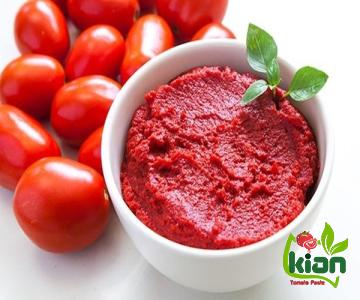Tomato paste is a staple ingredient in the culinary world, being widely used in the preparation of various dishes. However, there is a common issue that plagues producers and consumers alike: tomato paste bitterness. In this article, we will delve into the factors that contribute to this bitterness and its impact on the food industry. 1. Understanding Tomato Paste Bitterness: Tomato paste bitterness can arise from several factors, including the quality of tomatoes used, harvesting techniques, processing methods, and storage conditions. Bitterness is primarily caused by the presence of chemical compounds known as glycosides, which are naturally occurring in tomatoes.

.
 2. Quality of Tomatoes: The quality of the tomatoes used to produce tomato paste plays a critical role in determining its taste profile. Tomatoes that are overripe or harvested during high-temperature conditions are prone to higher levels of bitterness. Therefore, it is crucial for producers to source high-quality tomatoes that have been properly ripened. 3. Harvesting Techniques: The timing and method of harvesting also influence the bitterness of tomato paste. Tomatoes that are harvested too early or too late can result in bitter-tasting paste. Additionally, properly handling and sorting the tomatoes during harvest is essential for minimizing bitterness.
2. Quality of Tomatoes: The quality of the tomatoes used to produce tomato paste plays a critical role in determining its taste profile. Tomatoes that are overripe or harvested during high-temperature conditions are prone to higher levels of bitterness. Therefore, it is crucial for producers to source high-quality tomatoes that have been properly ripened. 3. Harvesting Techniques: The timing and method of harvesting also influence the bitterness of tomato paste. Tomatoes that are harvested too early or too late can result in bitter-tasting paste. Additionally, properly handling and sorting the tomatoes during harvest is essential for minimizing bitterness.
..
 4. Processing Techniques: The processing techniques employed during the production of tomato paste can significantly impact its bitterness. Factors such as cooking temperature, duration, and the addition of additives can all affect the taste. Overcooking or prolonged exposure to high temperatures can intensify the bitterness. 5. Storage Conditions: Improper storage of tomato paste can accelerate the development of bitterness. Exposure to light, air, and excessive heat can cause oxidation, leading to a bitter taste. Proper packaging and storage techniques should be implemented to preserve the quality and taste of tomato paste. 6. Consumer Expectations and Preferences: Consumer taste preferences also influence the perception of tomato paste bitterness. Some individuals may prefer a slight bitterness in their tomato-based dishes, while others may find it unpleasant. Therefore, it is important for producers to strike a balance to cater to diverse consumer preferences. 7. Mitigating Tomato Paste Bitterness: To minimize or eliminate bitterness in tomato paste, producers can employ several techniques.
4. Processing Techniques: The processing techniques employed during the production of tomato paste can significantly impact its bitterness. Factors such as cooking temperature, duration, and the addition of additives can all affect the taste. Overcooking or prolonged exposure to high temperatures can intensify the bitterness. 5. Storage Conditions: Improper storage of tomato paste can accelerate the development of bitterness. Exposure to light, air, and excessive heat can cause oxidation, leading to a bitter taste. Proper packaging and storage techniques should be implemented to preserve the quality and taste of tomato paste. 6. Consumer Expectations and Preferences: Consumer taste preferences also influence the perception of tomato paste bitterness. Some individuals may prefer a slight bitterness in their tomato-based dishes, while others may find it unpleasant. Therefore, it is important for producers to strike a balance to cater to diverse consumer preferences. 7. Mitigating Tomato Paste Bitterness: To minimize or eliminate bitterness in tomato paste, producers can employ several techniques.
…
 These include using high-quality and properly ripened tomatoes, careful harvest and handling practices, precise processing methods, and ensuring optimal storage conditions. Additionally, selecting and utilizing additives or flavor enhancers can also help improve the taste profile of tomato paste. Conclusion: Tomato paste bitterness is a common challenge faced by producers and consumers in the food industry. Understanding the various factors that contribute to this bitterness is essential for providing consumers with high-quality products that meet their taste preferences. By carefully selecting ingredients, implementing appropriate processing techniques, and ensuring proper storage, tomato paste producers can strive to provide a consistently delicious product that is free from unwanted bitterness.
These include using high-quality and properly ripened tomatoes, careful harvest and handling practices, precise processing methods, and ensuring optimal storage conditions. Additionally, selecting and utilizing additives or flavor enhancers can also help improve the taste profile of tomato paste. Conclusion: Tomato paste bitterness is a common challenge faced by producers and consumers in the food industry. Understanding the various factors that contribute to this bitterness is essential for providing consumers with high-quality products that meet their taste preferences. By carefully selecting ingredients, implementing appropriate processing techniques, and ensuring proper storage, tomato paste producers can strive to provide a consistently delicious product that is free from unwanted bitterness.











Your comment submitted.